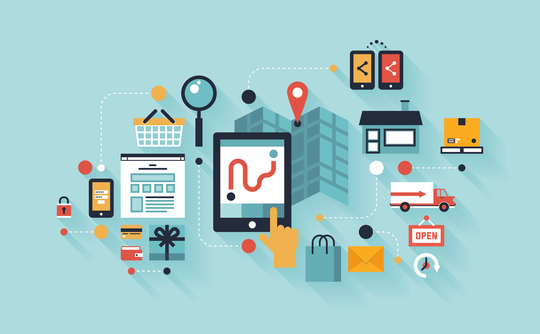Where Does Context Live?
Knowing the basic information about a customer is no longer enough. Now, marketers need to be able to understand the context surrounding their customers, including their location, devices, activities, and conditions.
Knowing the basic information about a customer is no longer enough. Now, marketers need to be able to understand the context surrounding their customers, including their location, devices, activities, and conditions.
We are all experiencing big shifts in our daily activities as we adopt smart devices of all kinds, from smartphones to smart watches that can control your car and home heating systems to smart socks with sensors that allow us to monitor and respond to physical conditions. The collision of changing consumer behavior, availability of media and information, and emerging technology is dramatically altering how we engage with the world around us. As a result, marketers and brands have to take a different approach to create individual experiences that align with the needs of today’s consumers.
For marketers, having access to a consumer’s profile is no longer enough. It’s all about context – a person’s specific situation, environment, and preferences are all taken into account at the time of engagement. Below are four components of “context” that should be used in concert with traditional marketing demographic, purchase, and propensity data to identify and deliver better contextual experiences.

Home, Commute, Work, In-Store, Vacation, Geo-Location…
Location is one piece of information that is incredibly valuable. Once it’s known, there are so many other pieces of data that can be inferred contextually. The weather we’re experiencing, for example. Also the traffic we’re in, the language we’re speaking, the price we’re paying for gasoline, the nearest café, park, store, theater, airport, or hospital, where we were two minutes ago and therefore in what direction we’re traveling – the list goes on and on.
When you can understand the location and time of engagement, it can often help infer your customer sentiment. Is the customer engaging with your brand during their commute, when they’re rushed and in a hurry to get to work on time? Or maybe they’re on vacation and need information about transportation options, local restaurants, stores, or entertainment options. All of this engagement information can be identified and then leveraged to provide contextual messaging that’s relevant to their current location. Location-aware contextual experiences (messaging and services) hold the key to providing next-generation services that can save consumers a great deal of time, money, and peace of mind – and create great brand loyalty in the process.

Smartphone, Laptop, Tablet, Console, Desktop, POS…
Knowing the type of device(s) your customers and prospects use to engage with your brand is just as important as knowing their location. Many customers do not consume content, perform actions, engage, shop, or buy on smartphones the same way they do on a desktop or tablet. Truly contextual marketing requires understanding not only where (location) but also how (what device) your customers are engaging.
There is a large focus on comparing how audiences are consuming content across devices, taking into account all of the different signals: IP addresses, locations, timeframe and time stamps, device make and model, device OS, screen size, affinities, interests, demographics, frequency, and much more. Once the marketer can understand this cross-channel consumer behavior and weave this data together at the individual level, they’ll be able to deliver greater contextual messaging to the right person via the right device.

Research, Learn, Share, Purchase, Review, Redeem, Support…
When you understand the activities of your customer, you have a greater level of contextual awareness: their likes, their dislikes, their buying habits, how, when, and where they interact with your company. You can then cater your marketing to specifically address those individual motivations and challenges. For example, perhaps your customer prefers to first do online research, including product reviews, social media feedback, and service options, before looking up the closet retail location to try the product out in-store. And then they often end up making the purchase via their mobile device because they found a better offer online. If you understand how your customers prefer to engage at each step in this cross-channel buying journey, you will be able to engage with a greater understanding of the customer’s intent and thus better meet your customer’s needs.

Season, Weather, Stocks, Gas Prices…
Contextual conditions are typically external to the actual individual consumer. However, they can have a great impact on their behavior. Most marketers have optimized their broader campaigns to recognize and respond to seasonality, holidays, and even weather to some degree. Many marketers are even starting to pay attention to additional conditions like location traffic and road conditions, fluctuations in financial markets, and gas prices in order to better serve their customer with messaging that fits their current context.
Contextual messaging may seem like another new and aspirational “thing” for companies to focus on. Yet understanding and responding to your audience in context is becoming a competitive requirement.
According to Gartner, context-aware technologies are expected to make a $96 billion impact on annual consumer spending across the globe by 2015.
By collecting and analyzing data on these various components that contribute to customer context, marketers will be able to shift from traditional digital marketing campaigns to contextual engagements that align with customers’ specific needs in the present moment.